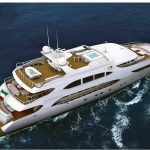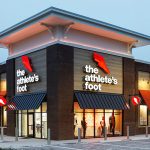VF Corp. is beginning to see some green shoots in the economy and management is expecting a relatively stronger Q4 with improving holiday sales. However, unemployment still remains a concern and management feels that the consumer retail environment will remain somewhat depressed until the job market improves.
“Over time throughout this recession, we've lost retail customers through this recession, and there are competitors who are weak where our brands are strong, and we do think we're taking share in many of our brands, in many product categories,” VF Corp.’s CEO Eric Wiseman told analysts, investors and the media during a conference call.
“It's true that inventories at retail are down a lot from prior year levels. It's also true the comp store comparisons, while still negative, are becoming less bad. Both of those factors bode well for stronger retail industry margins near-term. However, we're going to continue to adopt a cautious approach to planning our business as we believe consumer spending will remain challenged as unemployment continues to rise, credit remains tight and saving rates remain above historic levels. We don't believe the global economy is out of the woods just yet.”
Overall Q3 revenues declined 5.1% to $2.09 billion from $2.20 billion in the year-ago period, with foreign currency translation accounting for two percentage points of the decline. Management said that continued growth in the international and direct-to-consumer businesses remain key long-term drivers of both organic growth and margin expansion.
International revenues declined 2% in Q3 on a constant-currency basis while direct-to-consumer revenues increased 6% for the period, driven by strong increases in the Vans, The North Face, 7 For All Mankind and Napapijri brands.
The direct-to-consumer business represented 15% of VF’s total revenues in the quarter, up nearly 200 basis points from the prior-year third quarter. Operating margins for the direct-to-consumer business also expanded during the quarter, driven primarily by the successful full-price retail formats. VFC opened a total of 23 stores across the brands in the quarter, bringing the number of owned-retail stores to 733 at the end of the quarter. Year-to-date, VF Corp. has opened 59 stores, and now expects to open more than 80 stores in total this year.
Management said that the company is choosing to expand only those concepts that will drive both top- and bottom-line growth. While VFC does not provide specific comp store data, management said that they are expecting an improvement in Q4 and they are beginning to see that in the stores. Wiseman also said, “The largest business in terms of retail, which represents about one-third of the number of stores that we have from a retail standpoint in the third quarter — showed comp store increases in the mid-single digits.”
Third quarter revenues in the Outdoor and Action Sports coalition were flat at $904.6 million, compared to $906.6 million in the year-ago period. Operating income and margins both hit “record levels” for the coalition in Q3, with operating profit jumping 10.8% to $209.1 million versus $188.6 million in Q3 last year. On a constant-currency basis, revenues rose 3% for the period. Global revenues at The North Face grew 10% while Vans grew 4% in the quarter on a constant-currency basis. Total direct-to-consumer revenues for the Outdoor and Action Sports coalition increased 17% in the quarter, with double-digit growth in the Vans, The North Face and Napapijri brands.
Total coalition revenues in the Americas rose 1%, while international revenues were up 4% in constant dollars, led by “exceptionally strong growth” in Asia. Operating income rose with margins reaching a record 23.1% in the quarter, with continued expansion in gross margins.
Imagewear coalition revenues fell 14.9% in the quarter, with comparable declines in both the Image and Licensed Sports businesses.
The Image business has been impacted this year by high levels of unemployment in key sectors affecting the industrial and protective apparel businesses. That impact is expected to continue, but easier comparisons in the Licensed Sports business should help in the fourth quarter. Licensed Sports revenues have been impacted by lower attendance at sporting events as well as the overall economic environment which has led to reduced sales of highly discretionary products such as team sports apparel. Operating income and margins declined reflecting the lower volumes, particularly those in the industrial and protective apparel businesses where profitability levels are higher than the coalition average. The Imagewear coalition’s operating margin is expected to be relatively stable in the quarter compared with the prior-year period.
The Jeanswear business declined 10.5% to $664.8 million for the quarter, while Sportswear revenues grew 3.7% to $149.1 million and the Contemporary Brands business increased 2.9% to $124.0 million for the quarter.
Overall gross margins were 44.3% of sales for the quarter, compared with 44.4% in Q3 last year. Despite a 100 basis point impact from higher pension expense, operating margins declined only slightly, to 15.2% of sales from 15.9% in Q3 last year. Overall VFC net income declined 6.8% to $217.9 million, or $1.94 a share, from $233.9 million, or $2.10, in the prior year’s quarter. The current year included a 17 cents per share combined impact from higher pension expense and foreign currency translation of 11 cents and 6 cents per share, respectively.
When asked about the large amount of cash VFC has been generating and the possibility of any planned acquisitions, Wiseman remained somewhat coy, saying only, “[I] can't comment specifically, but can I tell you we're busy and active. [We] would like to make some acquisitions, but don't have anything we can talk about now.”
When asked about the large amount of cash VFC has been generating and the possibility of any planned acquisitions, Wiseman remained somewhat coy, saying only, “[I] can't comment specifically, but can I tell you we're busy and active. [We] would like to make some acquisitions, but don't have anything we can talk about now.”
Inventory reduction actions have resulted in a 12.7% decline in inventories to $1.17 billion at quarter-end, compared to $1.34 billion at the prior-year quarter-end. By year-end, inventories are expected to be down approximately 13%, or $150 million, from year-end 2008 levels. Also regarding inventories, management said that VFC has raw materials held on consignment and can go from purchase order to the distribution center in 20 days for the products that VFC manufactures in its owned factories. However, VFC will not be able to react to unexpected holiday demand for long-lead-time equipment made in Asia.
VFC also increased full-year earnings guidance. 2009 revenues are expected to be down about 6%, with 2% of the decline due to foreign currency translation. Earnings per share should range between $4.85 and $5.00 versus $5.42 in 2008, including a negative impact of approximately 70 cents per share in 2009 from higher pension expense and currency translation. Management expects stronger revenue comparisons in the fourth quarter, helped in part by more favorable foreign currency translation rates. Q4 Earnings per share should be up sharply over 2008 levels, as comparisons will benefit from our growing direct-to-consumer business, operating efficiencies and the absence of the restructuring actions that reduced last year’s fourth quarter earnings by 30 cents per share.















